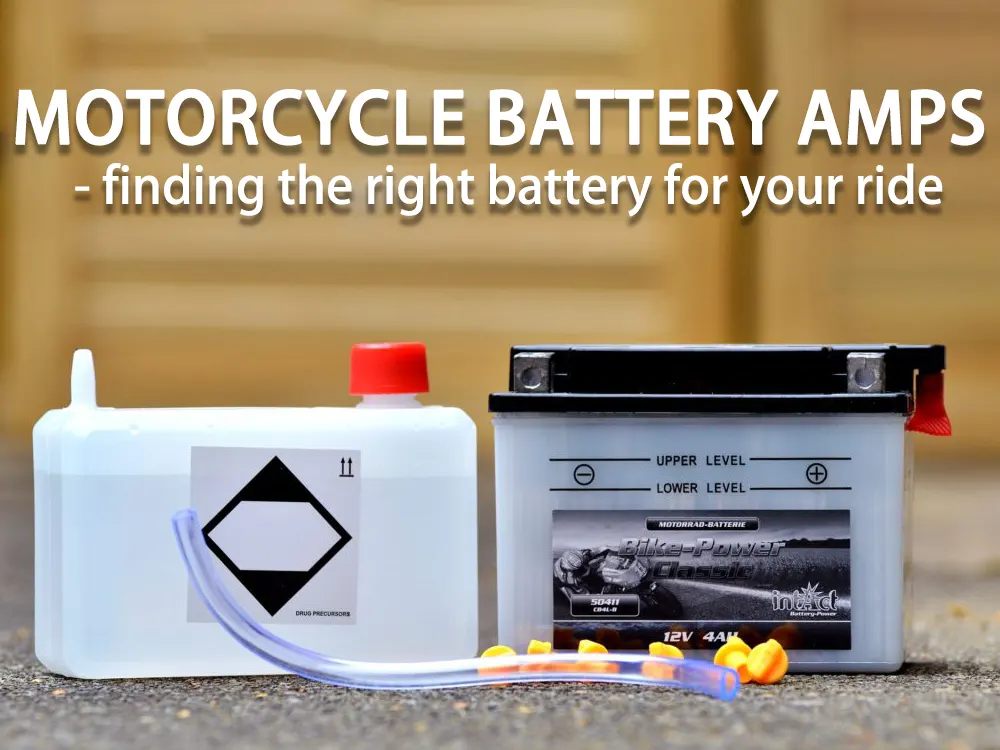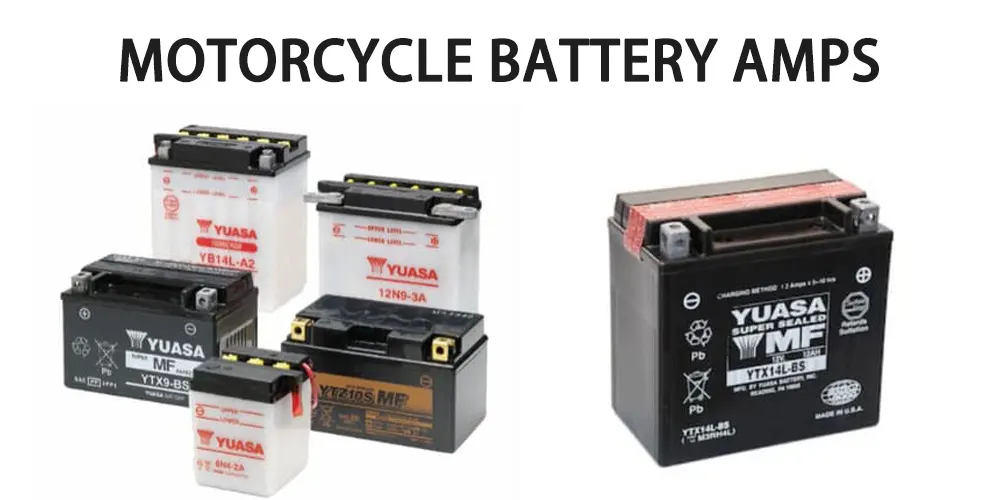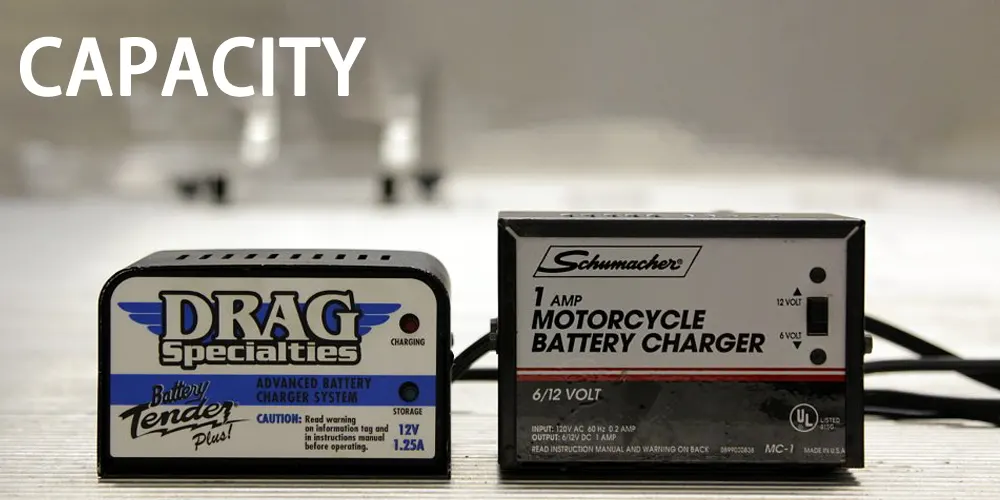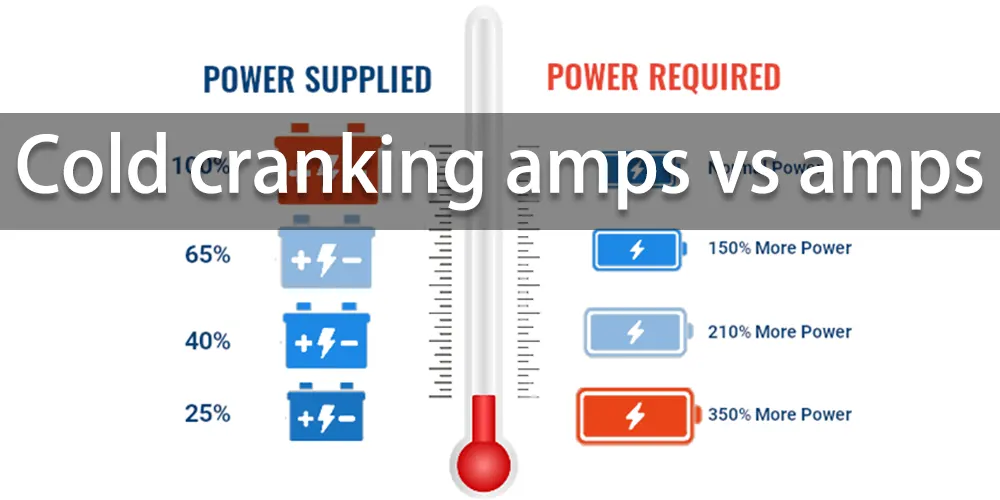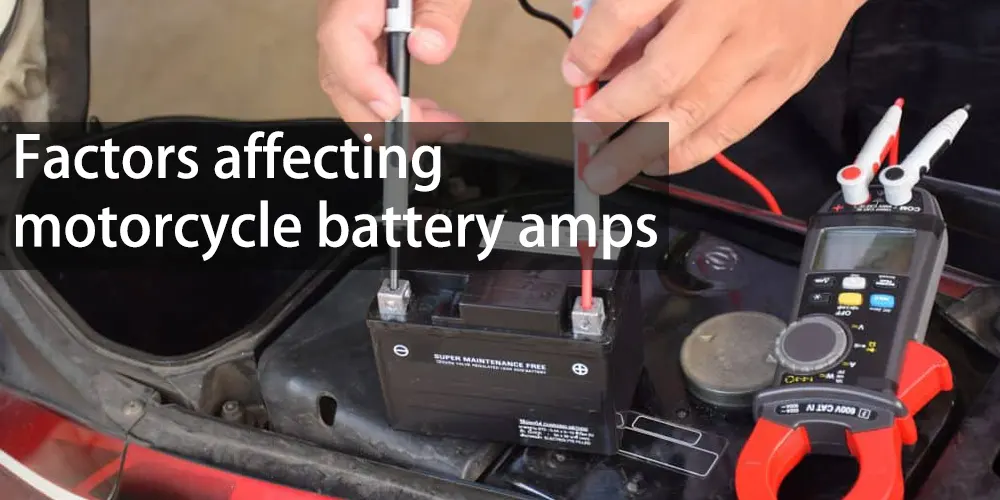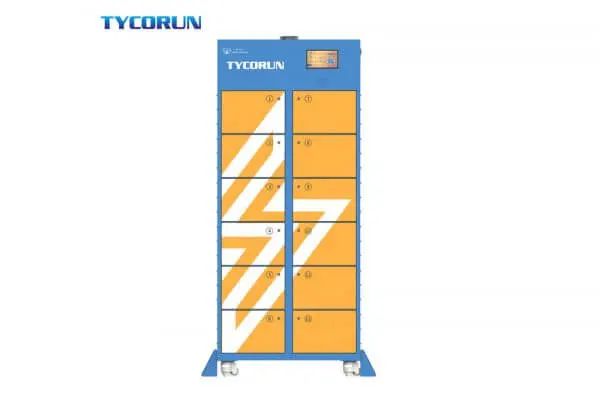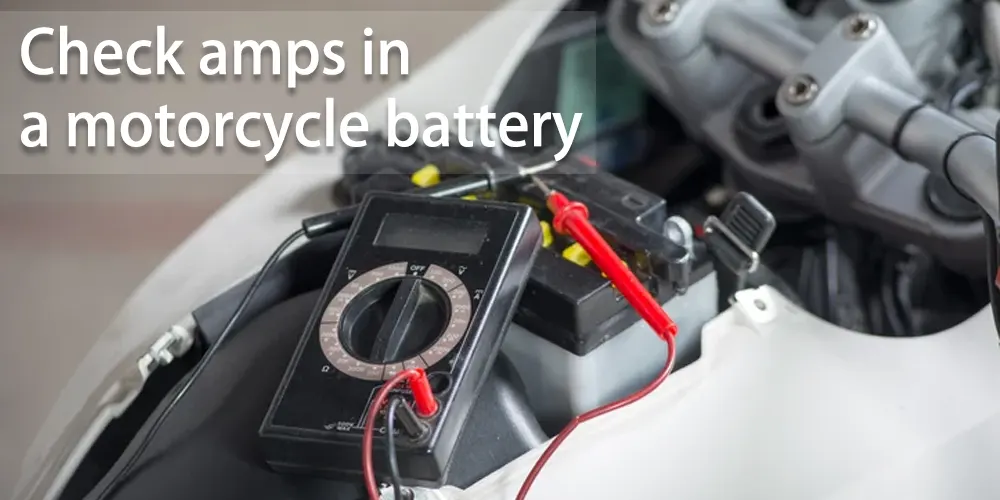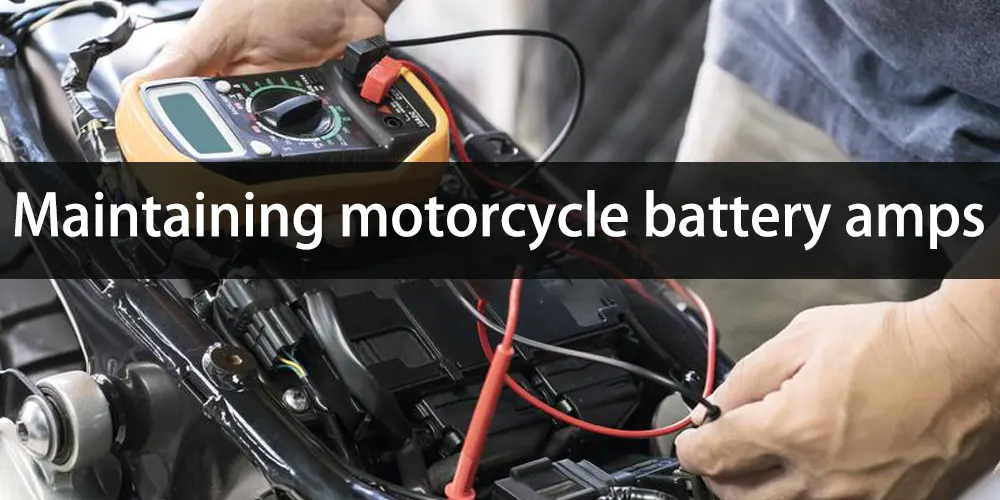Home » lithium ion battery knowledge » Motorcycle battery amps – finding the right battery for your ride
Motorcycle battery amps - finding the right battery for your ride

Choosing the ideal option from the available choices can require time and effort. This is why you must know the basics of motorcycle battery amps and how to choose the one perfect for you.
If you’re still searching for where to learn, pause a bit because you’re in the right place.
What are amps in a motorcycle battery?
Amps measure how much electric current your battery can deliver to power your motorcycle.
They affect how well your battery starts and runs your motorcycle’s electrical system. So amps are one of the factors you should consider when choosing a motorcycle battery.
Introduce battery terms related to amps
There are a few fundamental battery words connected to amps that you need to understand.
They can help you understand how your battery works, the function of amps in batteries, and how to select the best motorcycle battery amps for your needs. This section will explain the following: Current, Capacity, and Ah(amps-hour).
Current
The quantity of electric charge moving through a point in a circuit per unit of time is called current; it is expressed in milliamps (mA) or amps (A). The more current flows through the battery, the more power it can deliver to the device.
Capacity
A battery’s capacity is the highest amount of electric charge it can hold and deliver over time.
Both ampere-hours (Ah) and milliampere-hours (mAh) are standard units of measurement for this important characteristic, with Ah being the more popular choice.
The capacity of the battery, which affects how long it can be used between charges, has a significant impact on battery life.
This results from the greater energy contained in a battery with a larger capacity. However, it’s crucial to remember that a bigger capacity sometimes means a larger and heavier battery.
Ah
Ah is a unit of measurement for capacity, and it means how many amps of current a battery can deliver for one hour.
For example, a 10 Ah battery can deliver 10Amps for 1 hour, 5Amps for 2 hours, or 1Amp for 10 hours.
However, this is an ideal value that assumes constant current and voltage. The Ah rating of a battery varies due to its type, size, temperature, and discharge rate, so you must consider these factors to determine its actual rating.
Do amps matter on a motorcycle battery?
Yes, amps matter on a motorcycle battery since they measure the electric current that flows through it.
A motorbike battery’s ability to provide amps directly relates to how much power it can store and use. Therefore, it’s essential to consider motorcycle battery amps to ensure they meet your power needs and deliver the best performance.
How many amps are needed to start a motorcycle?
The number of motorcycle battery amps required to start a bike varies on several factors. These factors include the engine’s size and condition, the battery’s age and type, and the surrounding temperature.
Typically, starting a motorbike requires motorcycle battery amps between 12 to 20 amps. However, it can require up to 30 amps if the battery is old or the engine is big.
Cold cranking amps vs amps
Cold Cranking Amps (CCA) are the maximum amount of current that your battery can deliver for 30 seconds at 0°F (-18°C) without dropping below 7.2V.
This is crucial since colder temperatures cause your battery’s chemical activity to decrease, which makes it more difficult to start a motorcycle. Your battery will function better in cold conditions if it has a higher CCA rating.
Amps are the basic unit of electric current and the charge that passes through a point in a circuit per unit of time. It is important for running any electrical device.
CCA and amps are related to batteries, especially car and motorcycle batteries. They measure the electric current that flows through the battery but has different meanings and applications.
Below are the differences and similarities between CCA and Amps.
How do CCA and amps differ?
● CCA is a specific test condition for batteries, while amps are a general measure of electric current.
● CCA is only relevant for starting engines, while amps are relevant for running any electrical device.
● CCA is usually higher than amps because it is a short-term burst of current, while amps are a sustained current flow.
How are CCA and amps similar?
● A battery’s electrical current is gauged by both of them.
● They both depend on the battery’s type, size, and condition.
● They both affect the performance and lifespan of the battery.
Factors affecting motorcycle battery amps
Many factors can affect how much your motorcycle battery amps can deliver and how long it will last; Let’s take a look at some of these factors:
Climate
The climatic condition of your current location can have a great impact on your battery performance.
This is why you must know that too much heat or cold can damage your battery and shorten its lifespan.
Battery age
Like any superhero, battery will eventually get old and lose some of its power.
The internal chemical processes of the battery will deteriorate with time, reducing the battery’s capacity and ability to retain a charge.
As a result, batteries need to be replaced every few years or if there are indications of poor performance, such as dull lighting, sluggish starting, or frequent charging.
Type of motorcycle
Different bikes have different electrical needs and systems. Some bikes have additional features and amenities, including ABS, EFI, GPS, or heated seats, which use more motorcycle battery amps.
Larger engines on certain motorcycles require more power to start and operate. Some bikes use different types of batteries that have varying characteristics and performance.
For instance, lead-acid batteries are more affordable, yet heavier and need more upkeep.
Lithium-ion batteries are known to be more efficient as well as lighter but can often be pricier. You must select motorcycle battery amps based on your needs and specs.
Riding habits
How you ride your bike can also affect the performance of your battery. You’ll keep your battery charged and in good shape if you ride regularly. Otherwise, you run the danger of leaving your battery undercharged or drained.
In order to maintain the right voltage and amps for your battery, you must charge it regularly and properly.
Typical motorbike lithium battery specification
Depending on the motorcycle’s power and performance needs, two different lithium battery standards are 48V 50ah and 72V 60ah. These two standards’ characteristics and variations are listed below:
48V 50ah
The 48V 50Ah lithium battery meaning it can supply 48V of electric pressure and store 2400Wh of energy. Depending on the load, speed, and terrain, this can power most electric bikes and scooters for a distance of roughly 100 kilometers on a single charge.
72V 60ah
The 72V 60Ah lithium battery can produce 72V of electric pressure and store 4320Wh of energy. Depending on the speed, terrain, and load, this power can be enough for roughly 200 kilometers on a single charge. This battery is a good choice for motorcycle, particularly for high-performance electric bikes, tricycles, and four-wheelers.
These two batteries are also available for battery swap cabinets. By battery swapping, quick and convenient power support can be obtained.
How to check amps in a motorcycle battery?
You’ll need a multimeter or voltmeter that can measure direct current (DC) amperage to check your motorcycle battery amps. Here are the steps to follow after getting those tools:
● Disconnect the battery wires starting with the negative one, after turning off your motorbike.
● Select a range for measuring DC amps on your multimeter or voltmeter that is more than the anticipated current consumption of your motorcycle.
For instance, if your motorcycle uses 10amps when working, pick a range of 20 amps or higher.
● The positive lead should go on the positive cable, and the negative lead should go on the negative cable when connecting the multimeter or voltmeter leads to the battery cables. Make sure that no metal components of the motorbike are in contact with the leads.
● Turn on your motorbike and observe the voltmeter or multimeter readout. It should display the motorcycle battery amps current draw. Adjust the range if the reading is out of range, either high or low.
● Start by removing the negative lead from the multimeter or voltmeter before turning off your motorcycle. Beginning with the positive cable, reattach the battery.
Depending on the type and accessories of your motorbike, the typical current draw of a motorcycle battery, when in operation, should range between 5 and 15 amps.
If the current drawn is excessive, a short circuit or a malfunctioning electrical part may be present. If the current drawn is too low, it may indicate a weak battery or a faulty charging system.
Ideal amp range for a motorcycle battery
The ideal motorcycle battery amps range depends on the power needs of the motorbike itself. Nevertheless, as a general guideline, a normal motorbike battery will have between 5 and 20 amps (amp hours).
You can examine the battery’s label or refer to your motorbike owner’s handbook to determine the precise motorcycle battery amps.
You may also test the current draw of your motorcycle and compare it to the battery’s capacity using a multimeter or voltmeter.
Maintaining motorcycle battery amps
Maintaining motorcycle battery amps ensures your battery’s best performance and longevity. Here are some tips on how to do that:
● Use a suitable charger for your motorcycle battery. You should use a charger designed for motorcycle batteries.
● Regularly check the battery’s voltage using a voltmeter or a multimeter. A 48v lithium battery that is completely charged should register between 54v and 54.6v based on different types of lithium battery.
For a 48v lifepo4 battery, when the voltage is less than 48 volts, you should charge the battery as soon as possible. Stop charging the battery and look for overcharging symptoms like bulging, leaking, or corrosion if the voltage exceeds 54.6v.
● Check your battery at least once a month, and make sure it stays dry and clean. If the terminals are rusted or unclean, clean them with a baking soda solution or a wire brush.
Make any necessary repairs if there are cracks, leaks, or loose connections.
The performance and longevity of the battery can be impacted by moisture, heat, and direct sunshine, therefore keeping the battery out of these environments.

